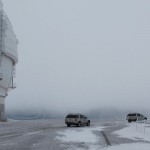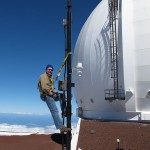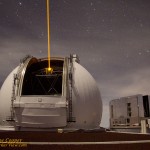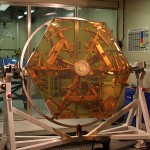OK, I have some little nagging issues in the format of the blog. I keep dealing with them, today I fixed the unordered list format issues. There is more to be done. I need a sample post to test the various formatting available in the CSS file, so here it goes…
Heading 1 Test
Heading 2 Test
Heading 3 Test
Heading 4 Test
Heading 5 Test
This is a Heading 6 paragraph that should be hanging out in the left column with a width of just over 150 pixels wide. Just more text to put some body in this paragraph. More text and yet more text.
Just another paragraph of text to simulate the continued posting. Look for a few inline links… Meteors are simply small bits of debris hitting the Earth’s atmosphere at very high speed, typically tens of thousands miles per hour. Our solar system is rich with this debris. Most of these bits are quite small, about the size of mote of dust or a grain of sand. Something the size of a pea would create a spectacular fireball that lights up the whole sky. While they often seem close, they are actually quite high, 60 miles (100km) above the ground when they flare into short lived fireworks.
Unordered List
- List Item 1
- List Item 2
- List Item 3
Ordered List
- List Item 1
- List Item 2
- List Item 3

Just another paragraph of text to simulate the continued posting. Just for fun an image is formatted to the right. Meteors are simply small bits of debris hitting the Earth’s atmosphere at very high speed, typically tens of thousands miles per hour. Our solar system is rich with this debris. Most of these bits are quite small, about the size of mote of dust or a grain of sand. Something the size of a pea would create a spectacular fireball that lights up the whole sky. While they often seem close, they are actually quite high, 60 miles (100km) above the ground when they flare into short lived fireworks.
This paragraph is blockquoted. Meteors are simply small bits of debris hitting the Earth’s atmosphere at very high speed, typically tens of thousands miles per hour. Our solar system is rich with this debris. Most of these bits are quite small, about the size of mote of dust or a grain of sand. Something the size of a pea would create a spectacular fireball that lights up the whole sky. While they often seem close, they are actually quite high, 60 miles (100km) above the ground when they flare into short lived fireworks.
Just another paragraph of text to simulate the continued posting. Meteors are simply small bits of debris hitting the Earth’s atmosphere at very high speed, typically tens of thousands miles per hour. Our solar system is rich with this debris. Most of these bits are quite small, about the size of mote of dust or a grain of sand. Something the size of a pea would create a spectacular fireball that lights up the whole sky. While they often seem close, they are actually quite high, 60 miles (100km) above the ground when they flare into short lived fireworks.
 A thumbnail image in the left column using Heading 6 formatting
A thumbnail image in the left column using Heading 6 formatting
This paragraph is right justified. Meteors are simply small bits of debris hitting the Earth’s atmosphere at very high speed, typically tens of thousands miles per hour. Our solar system is rich with this debris. Most of these bits are quite small, about the size of mote of dust or a grain of sand. Something the size of a pea would create a spectacular fireball that lights up the whole sky. While they often seem close, they are actually quite high, 60 miles (100km) above the ground when they flare into short lived fireworks.
This paragraph is centered. Meteors are simply small bits of debris hitting the Earth’s atmosphere at very high speed, typically tens of thousands miles per hour. Our solar system is rich with this debris. Most of these bits are quite small, about the size of mote of dust or a grain of sand. Something the size of a pea would create a spectacular fireball that lights up the whole sky. While they often seem close, they are actually quite high, 60 miles (100km) above the ground when they flare into short lived fireworks.
Just another paragraph of text to simulate the continued posting. Meteors are simply small bits of debris hitting the Earth’s atmosphere at very high speed, typically tens of thousands miles per hour. Our solar system is rich with this debris. Most of these bits are quite small, about the size of mote of dust or a grain of sand. Something the size of a pea would create a spectacular fireball that lights up the whole sky. While they often seem close, they are actually quite high, 60 miles (100km) above the ground when they flare into short lived fireworks.
A gallery test…







